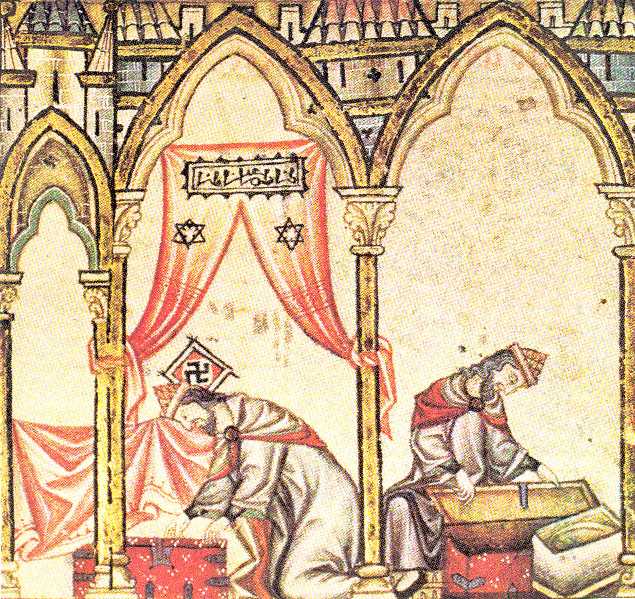

Figure1 . Replica made in pine.
7) Manuscript depictions of Chests and caskets.
Manuscripts are also a good secondary reference source for chest designs. Using information from both extant remains and manuscript depictions it can provide enough information to make replicas of such depictions. The following are examples of manuscript depictions of chests which could be used to make replicas.
| Source | Description |
| The body of John Chrysostom arrives in Constantinople in a locked chest. Menologies of Basil II, c. 1000 AD. [ms. Vat. Gr. 1613, fol.353] | Rectangular chest, the front ape pears short than the back. No hinges indicated. A single hasp (with a curved tongue appearance) in the centre of the chest closes the lock. The lock plate is rectangular in shape with a single rectangular slot for the key on the right hand side. |
| Source | Description |
| Spanish Strongbox – 12th Century (?)
Delort, R., Life in the Middle Ages, London, 1973, p. 283. |
Two strong boxes of very similar appearance being used by Jews.
Left: Red rectangular chest (no legs) decorated with a pattern of three white dots (on front of lid, front and side, I suggest that the pattern would have been repeated over the rest of the chest, except maybe the bottom). The hinges are not visible but I suggest they resemble the corner brackets in shape and where a “butterfly” hinge in design. The single hasp closes the chest on left of the square lock plate with inwardly curving bottom and sides. The lock plate has a single rectangular key hole on the right hand side, indicating a turn key and tumble lock. There are two pointed corner brackets per side and bottom, I suggest this would have bee repeated on the other corners. Right: Much the same as above, the open lid may indicate a raised edge around the edge of the lid. I suggest this could be achieved by attaching thin timber along the edges of a flat lid. This would add to the height of the chest. The hasp and the corner brackets shows a pointed terminal. |


Figure1 . Replica made in pine.

Figure 2. Copy of the source manuscript.
| Source | Description |
| Maciejowsky Bible 1250 A.D.
The Pierpont Morgan Library, New York, USA.
|
46. The brethren announce to their father that Joseph is alive.
Black casket, flat rectangle in shape, hinges not shown, single hasp from lid to square lock plate on left, the black ‘squiggle’ could be key hole, corner and bottom corner brackets (two per side and bottom). All the fittings are shown in a gold colour. Red casket, underneath black casket mentioned above, simple hasp closer with round terminal. The front of the casket is decorated with two rondels on either side of the hasp. All the fittings are shown in a gold colour. 47. Jacob is presented by Joseph to Pharaoh. Brown casket, single hasp from lid to square lock plate on left, the black reversed “L” could be key hole, the front of the casket is decorated with a rondels on the right [I would assume that there would be another on the left side] side of the hasp. All the fittings are shown in a gold colour. |
 Visitors to this page
Visitors to this page
| Copyright © Stephen Francis Wyley 2005
[email protected] |